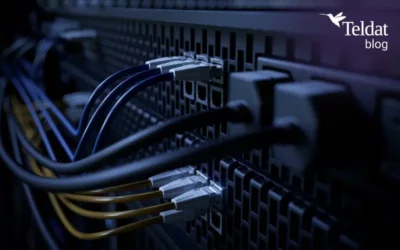
Why is this so? Mainly because IoT applications and devices, to be economically viable need to have low costs and long battery lives, and LPWA can offer this. Indeed, initial research suggests that there will be between 5 to 7 billion LPWA connections by 2022!
Apart from low costs and long battery lives, LPWA will increase the parts of the IoT industry that require low data rates, low mobility, hard to reach locations, low level of power consumption, a long range and also security. This is something which no matter which way you look at it, existing mobile technology is not ideal for the above scenarios. Hence this makes LPWA more feasible.
However, what is true, is that existing cellular operators are prime candidates to be the ones to offer LPWA, because they don’t need to make large changes in their existing infrastructure. Initially the cellular operators would just need make enhancements to their current networks. Moreover, coverage of these cellular networks to date, virtually cover the whole globe and roaming permit country frontiers to be crossed without any problems. Also, there tends to be various cellular operators in each country which means there is competition, and in turn this helps to keep pricing down.
Industries that have requirements mentioned at the beginning of this article are many. To name but a few; agriculture, utilities, health, automotive, transport, manufacturing, wearables and more.
Utilities: all utility companies need to meter and monitor low levels of data on a periodic basis. Whether to measure client consumption or as a backup system to detect faults, leaks, etc. LPWA could also be used at the energy production plants.
Smart Cities: Smart cities are not only about the utilities industry, but much more when we consider LPWA. This technology can be implemented into many public services. From important services which need to have a tight control, such as street lighting, local police, sewers, etc. to public services from which city councils can obtain revenues from. Parking, bicycle hiring, central city areas with levy tolls, etc., to name but a few.
Manufacturing: In the same way, backup systems can be used with LPWA for the manufacturing industry, to detect faults along any parts of an assembly line or any in warehouses and in other places. Even to monitor procedures to maintain everything at optimum levels.
Buildings: LPWA can be integrated into both private and business buildings. For example, controlling heat and light disorders or controlling machines themselves. Within a home that could be the temperature of a fridge and within a business that could be controlling the ink level of printers.
Health: Health can initially use LPWA for two basic areas. For patients and secondly for all hospital infrastructure. Having patients at home is becoming increasingly popular because on the one hand it reduces costs drastically and secondly because patients tend to improve faster at home. Using LPWA on patients to monitor blood pressures, oxygen levels, etc. is vital to be able to send patients home early. As far as controlling infrastructure, Hospital buildings would be prime candidates for everything related to smart buildings.
Agriculture: LPWA networks will enable to keep track of live animals. Whether it’s livestock or even wild animals to detect their whereabouts. Also, soil can be monitored to always have optimum humidity levels.
Transport: Independently of tracking the vehicles, tracking of transported goods is not currently online. It is mostly done with barcodes as they pass through the different phases of their travel. However, LPWA could have packages monitored at whatever time desired.
Wearables: With LPWA, children and old aged people could wear simple devices to keep them tracked down and under control so that they don’t stray away from desired areas.
Overall it is clear that LPWA is going to boost IoT and that’s the sensation one gets from all those involved in this industry. Mobile operators, infrastructure companies, device/module/chipset manufacturers and integrators. Within Teldat we have been manufacturing mobile routers and devices for nearly twenty years, and we are keeping close control of LPWA, as we have with other mobile technology in the past.

























